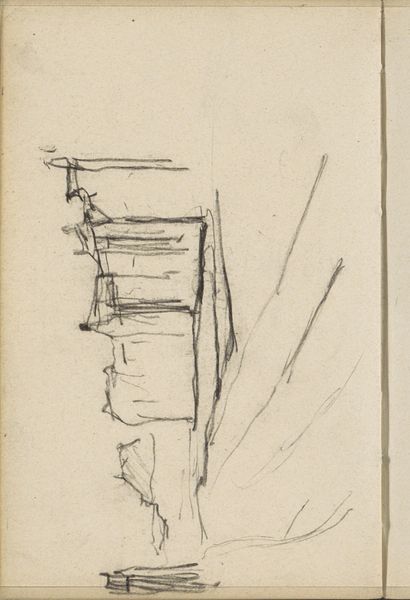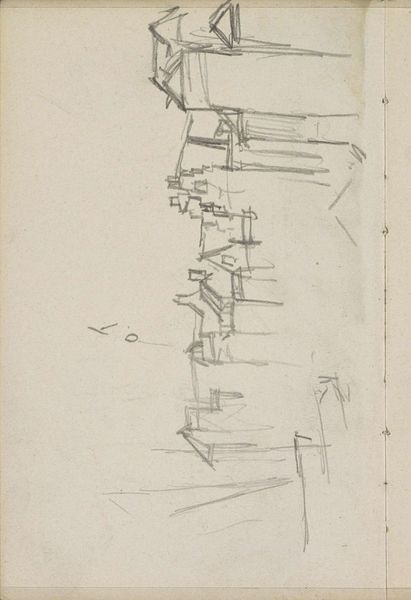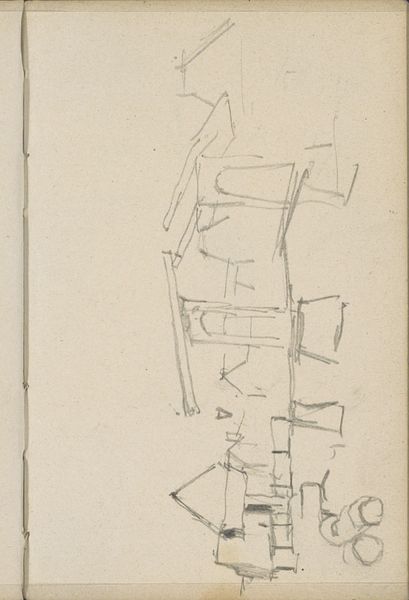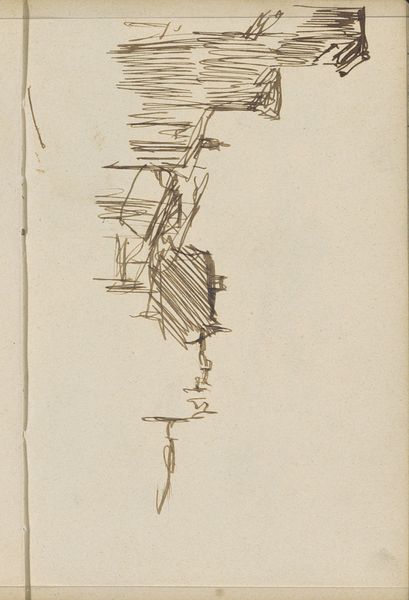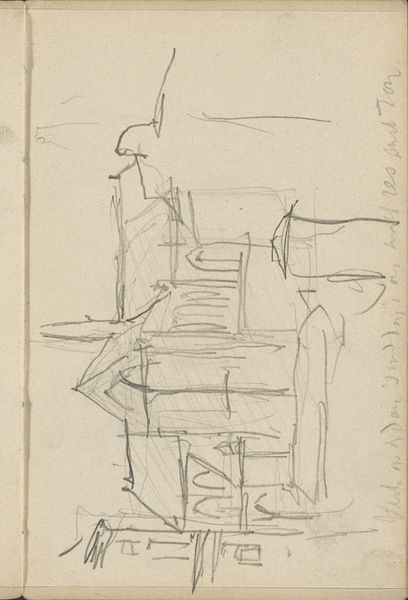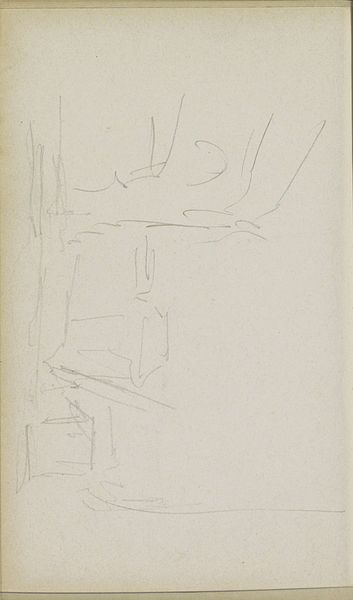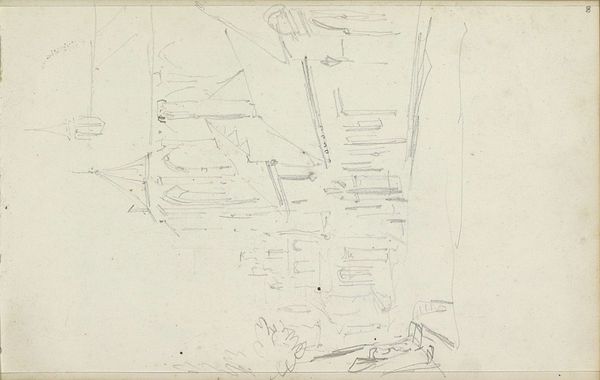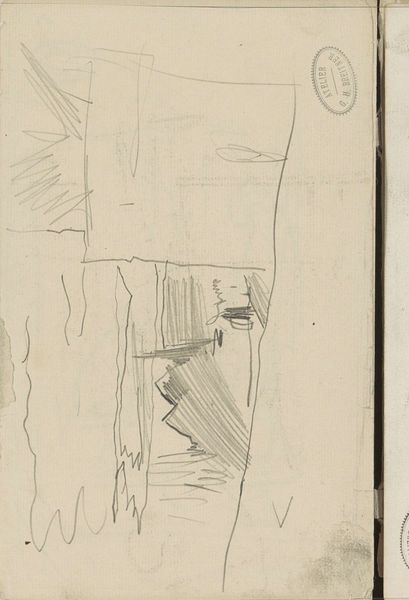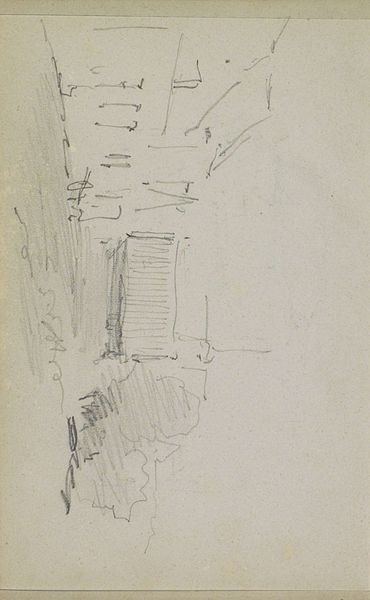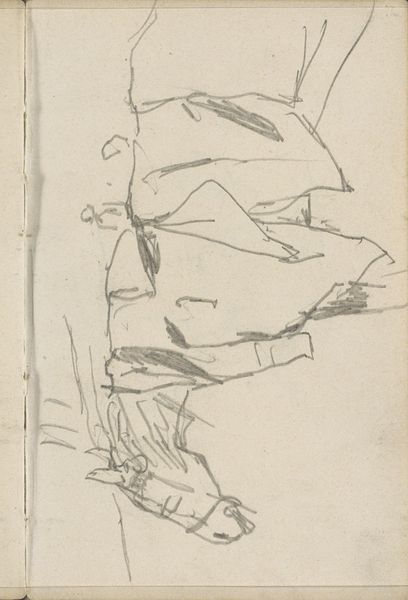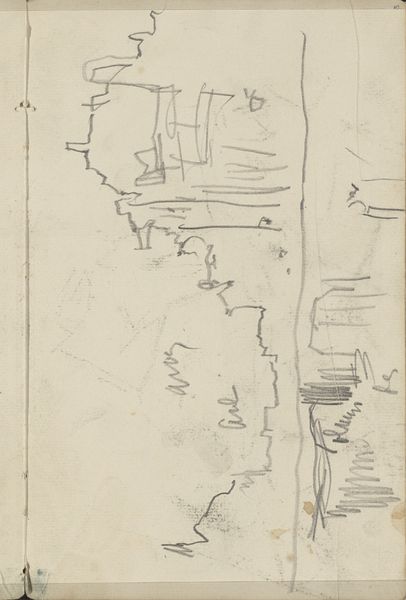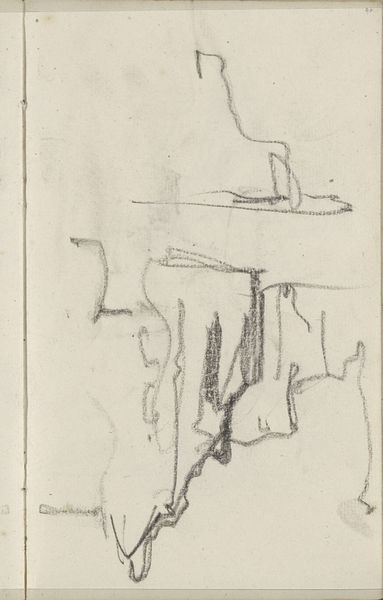
Copyright: Rijks Museum: Open Domain
Curator: This is "View of the Haarlemmerplein in Amsterdam," a pencil drawing by George Hendrik Breitner, made sometime between 1906 and 1923. What's your initial reaction to it? Editor: I find it intriguing. There's a raw, almost unfinished quality to the sketch, a fleeting impression captured in pencil. It feels like looking at the bones of the city, stripped bare. Curator: Indeed. Breitner's process here seems very direct, focused on capturing the essential forms. The means of production are quite simple—pencil on paper, a readily available technology—yet it results in a complex layering of lines and perspectives. How do you read this work in terms of its historical moment? Editor: Well, we have to consider the urban expansion Amsterdam underwent at the turn of the century. Breitner’s work captures a city in constant flux, as it moved into modernity, representing how the artist acted as both observer and participant in the creation of modern Amsterdam. It reflects social changes that involved urbanization, but also industrial growth. Curator: Precisely. He was known for documenting Amsterdam’s streets, often capturing working-class life. However, in comparison, this rendering of the Haarlemmerplein focuses more on architectural form, which allows for further examination of space and the socio-economic implications of the construction happening during this period. What’s fascinating is Breitner’s stylistic choices here—the use of sketch-like execution reflects impressionistic tenets and is in stark opposition to rigid academic styles. Editor: And let's think about the intended audience for such a work. Sketches like this were often preparatory, meant for larger paintings. Considering that the Rijksmuseum now holds it suggests a shift in how such sketches were perceived and valued, elevating it from a workshop aid to a stand-alone object worthy of display. It challenges the traditional hierarchies of art. Curator: Agreed. The institutional context does impact its meaning. Editor: It leaves you wondering what stories are etched into that square—the aspirations of a booming city. Curator: For me, it illuminates the artist's work, highlighting a constant pursuit of capturing the pulse of Amsterdam, reducing it to bare lines of expression, which, perhaps inadvertently, tell as much about societal forces at play. Editor: Exactly, and thinking about where art fits into societal growth offers important perspectives on historical developments, even within a preliminary pencil sketch.
Comments
No comments
Be the first to comment and join the conversation on the ultimate creative platform.
